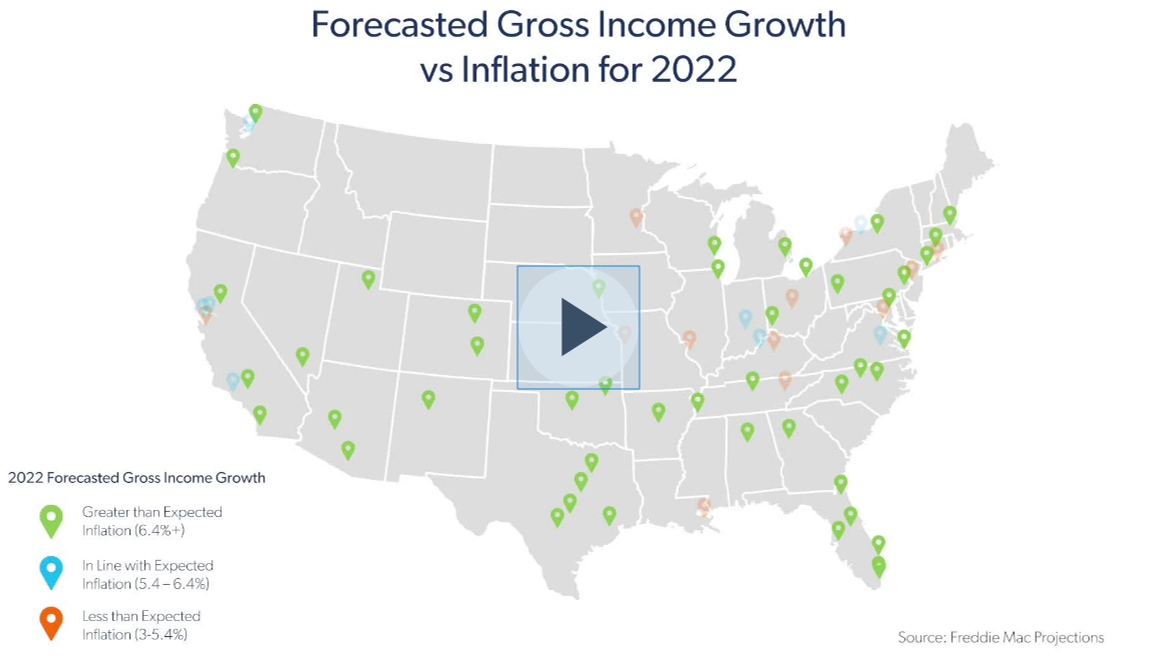2022 Midyear Multifamily Outlook
The economy has entered a turbulent time as interest rates have moved up and inflation is very real for consumers. The likelihood of recession is much higher than earlier this year according to most macroeconomic forecasters, and the sharp rise in interest rates has already impacted volume as borrowers and investors may have sidelined deals until the volatility levels out. Despite the increased uncertainty, the multifamily industry is positioned well and we forecast solid performance for the year. Read the full report.
Performance Continues to Excel in the First Half of 2022
The strength of the rental market since the end of 2020 has been remarkable, with more markets seeing higher rent growth in the past 18 months compared with the five years leading up to the pandemic. Since January 2021, every market experienced rent growth of at least 10%, while roughly two-thirds of markets saw rent growth of 20% or more. Markets in Florida and the Sun Belt region have generally performed the best, while markets in the Northeast and Midwest have lagged but still saw rent growth in excess of 10% over the past 18 months.
Fundamentals are Well Positioned
We expect fundamentals to remain quite strong with vacancy rates flat at 4.8% and full-year gross income growth of 6.8%. We also expect the labor market to remain stable and the multifamily market to perform well, with both vacancy and gross income growth more favorable than long-run averages. Looking into 2023, vacancy rates are expected to increase modestly to 5.1%, just below the long-term average, while gross income growth will slow to 4.3% but remain above the long-term average of 3.6%.
Renter preference continues for generally smaller and less expensive markets in the southern and western areas of the country, but recently the gateway markets that were battered during the pandemic have seen strong rent growth. New York City rent grew 7.2% through the first six months of 2022 while Boston saw rent growth of 7.3%. Meanwhile, rents in San Francisco still trail their pre-pandemic level, but have grown nearly 6% in 2022.
One of the pandemic’s lasting effects is the trend of work from anywhere, which has helped shift demand from densely populated, expensive gateway markets to warm-weather, less expensive secondary and tertiary markets.
Lower Origination Volume Forecast
We expect volume in 2022 to slow down to $440 billion-$450 billion due to the increased economic uncertainty, higher Treasury rates and downward pressure on property valuations.
While rent growth and cap rates may respond slowly to the increased Treasury rates, sales transactions and total origination volume feel the impacts of interest rate volatility more immediately. A steep rise in Treasury rates may push potential deals to the sidelines as borrowers wait out the volatility. Given the strength seen in rents, many financed properties are well positioned to cover their debt payments. As such, borrowers are not as pressured to sell properties at a lower price point and may wait for more favorable investment opportunities, slowing overall business volume.
To learn more, read the full report or watch the video below.
